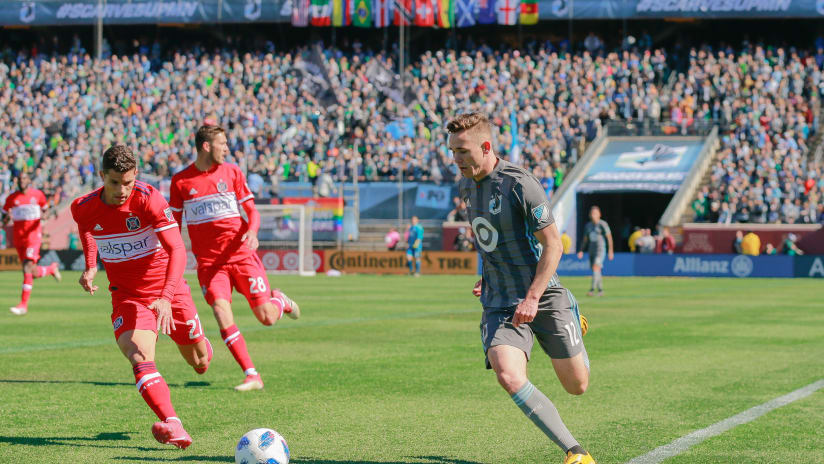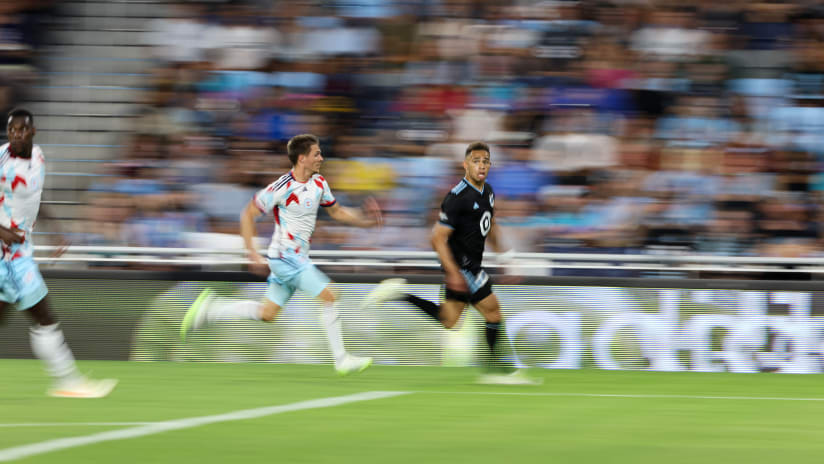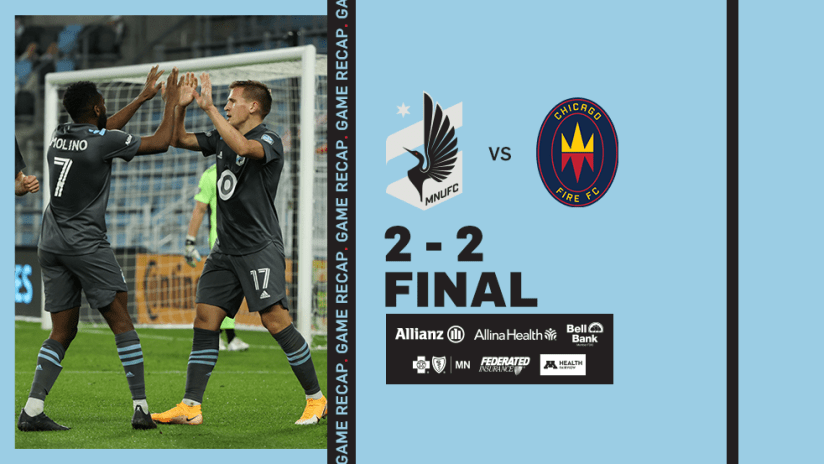Throughout much of last season, Minnesota looked to its forwards to provide the spark on the offensive side of the ball. Christian Ramirez and Abu Danladi led the team and combined to score 22 of the Loons’ 47 goals last season. However, the majority of the team’s goals this year have come from an unexpected source: the midfield.
Seven of Minnesota’s nine goals this season have come from midfielders. Braces from Kevin Molino and Ethan Finlay led the charge in the opening weeks, followed by Ibson and Sam Nicholson combining to get a win in the home opener. Then after a two-week goal drought, Darwin Quintero stepped up to score in his debut against Portland and set up the own goal late in the match.
Now it isn’t unusual for midfielders to frequently get on the scoresheet. MNUFC midfielders scored 17 of the club’s goals in 2017. But why are these players getting the majority of goals this year?
A lot of it might have to do with Ramirez and Danladi drawing defensive pressure to themselves while acting as target forwards. This opens up space in other areas of the pitch, perfect for the midfield to take advantage.
A good example of how they do this is Finlay’s second goal against Orlando City SC.
The first pass comes to Mason Toye. As he checks to the ball, he causes the centerbacks to step up and close the gap on him. At the same time, Ibarra starts his diagonal run, allowing for a quick flick on from Toye to create yards of open space. As the defense scrambles to cover, the left back has to turn away from Finlay on the far side This allows the Minnesota midfielder to put on a burst of speed and brush past the defender before he notices. All Ibarra has to do is put the ball at the top of the six-yard box for an easy tap in.
The defense is so focused on the forward’s move that they never see the midfielder sneak into a perfect position right in front of goal. It is very difficult to defend and can turn would-be mismatches into scoring opportunities, like Ibarra’s first half chance against Portland.
Ramirez makes a run out wide, taking one defender with him and drawing another off Marc Burch to cover a passing lane. The ball is quickly sent back to Burch for a cross into the box. Ramirez runs back across goal, leaving two defenders far away from the crowd in the middle and causing Portland’s Alvas Powell to make a slight step away from goal. That half step prevents the 6-foot Powell from jumping to head the cross out, allowing the 5-foot-6-inch Ibarra to charge in and head the ball goalward. The only thing saving the Timbers is a quick reaction by Jake Gleeson.
As long as opponents are going to leave these openings, the Loons’ midfield is going to exploit them, especially players like Nicholson and Quintero who aren’t afraid to shoot on sight when the gaps open up. But even though they are getting more space, and with it more scoring opportunities, it doesn’t mean they aren’t willing to share the glory.





